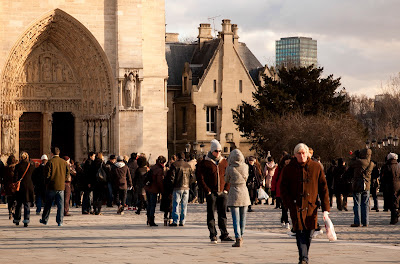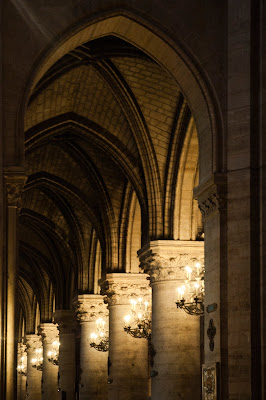The Jussieu Campus looks like one of those projects a student might put up on a wall that would create a conversation which assumes it would never be built and is more about an idea of architecture. Well, it's built. It's in Paris, and it's generally considered a failure. Nobody really knows about it even though it is directly across the street from the well known and visited Institut du Monde Arab.

From Google Earth
The entire project is an extruded grid standing on pilotis. I went to see it, because I wanted to see what happens when such an abstract architectural thing becomes reality. I was intrigued by the images from google earth.
 It was not so great. After seeing one courtyard, I'd pretty much seen them all and the construction made it impossible to move around the way one is supposed to. However, there were a lot of interesting little moments where the ground was shaped and became an ampitheatre or the ground opened up into a lowered courtyard. There were stramps (stair-ramps) leading into a giant glass pyramid, and all these other little things that I've seen people put into their architecture to add interest. It was hard to say whether these things were successful as the campus was closed and unoccupied, but you can look at some renderings from AS Architecture, the people working on the renovations now.
It was not so great. After seeing one courtyard, I'd pretty much seen them all and the construction made it impossible to move around the way one is supposed to. However, there were a lot of interesting little moments where the ground was shaped and became an ampitheatre or the ground opened up into a lowered courtyard. There were stramps (stair-ramps) leading into a giant glass pyramid, and all these other little things that I've seen people put into their architecture to add interest. It was hard to say whether these things were successful as the campus was closed and unoccupied, but you can look at some renderings from AS Architecture, the people working on the renovations now. Next stop was across the street at the Institut du Monde Arab by Nouvel. There's a great elevational view of it from the Jussieu campus, as you can maybe tell from the above photo.

Looking down from the 6th floor to the ground floor entry
I wasn't too interested in taking the hundred millionth photo of the front of the building or the mechanics from behind. There was nothing surprising there. What was surprising was the lightness of the hollow core and the stairs which were made important by being one of the places where one could get right up against the facade.
















